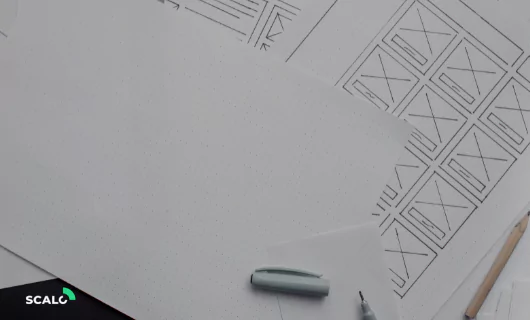Many companies question the importance of product design, relying only on their assumptions when making custom software. Often those apparent savings lead to serious and expensive mistakes. Read on to find out why overlooking the product design phase may cost you hundreds of thousands of euros and why starting with a Minimum Viable Product (MVP) will be a smart decision.
According to CB Insights, the most common reason why startups fail is because of „no market need” (42% of startups).
This shows that even the best technology isn’t enough if you’re not solving the problems of real users. As custom software development is based on making software for a specific audience, it needs to be designed with future users in mind. Building a wrong product can waste time and money, yet many companies continue squandering months and thousands of euros making a product before they verify whether users will be interested in it or not.
Let’s dive deeper to see what you can do to minimize the risk of building products that no one wants.
Understanding the Business Objectives
When creating a customized product, you should focus on a set of features that answer your target market’s needs and problems. The fundamental questions are, for whom you’re building this product, and why should customers use it? If you know the answers, you’re on the right track.
If you don’t collect customer insights and you’re not aware of user needs, you may end up with features that have no market value. Think about it this way: doing research is cheaper than writing code. It takes time but opens great business opportunities.
The entire design process mixed with analyses and tests helps you define missing functionalities or potential risks for your custom software. When a problem isn’t identified early, you’ll struggle with fixing the wrong assumptions and it can cost you several thousands of euros.
Building a strong foundation for a product
Keep in mind that the cost of a too ambitious plan can be enormous:
Waiting months to discover what doesn’t work leads to feature changes, which results in extra costs and time spent on a project. Also, if a product is launched too late, you may miss the market opportunity and your competitors can grab some market share.
What if we tell you that your custom software needs an MVP?
A Minimal Viable Product is a product with its core features and is used to help validate ideas quickly. It is NOT a final product. With it, you can decide whether the product is worth building in its original plan, or if you should change the initial assumptions.
The MVP helps you to minimize development costs and allows you to plan properly. Focus on the essential features that solve user problems to let the product go to market quickly. To make it easier, create a must-have and nice-to-have features list, then segregate the features by value and priority. Remember, you are creating the most viable product, so focus on the minimal set of features that make a real impact to the end user.
Revision of the assumptions
Building an MVP is not about achieving architectural perfection. The goal is to have a custom product that works and solves user problems. Use the MVP to measure effects, collect feedback and react quickly.
The No. 1 reason why companies fail is that they don’t understand their customers. Put a strong focus on getting valuable feedback from early users, as it helps you understand how others perceive your product.
When you introduce the product to the market and people find it useful, then you can start making money selling it. As a result, you can improve the product with new features, along with the release early, release often philosophy popularized by Eric S. Raymond. Your product will evolve over time, based on the customer feedback.
Not convinced enough? Think of companies like Uber or Dropbox that also started as MVPs and added more features later on.
Dropbox, for instance, started in 2008 with a demo that was introduced early to the market, which gave them 100,000 registered users. From there, they’ve been doing constant improvements, collaborating and integrating with other platforms. It took them more than a year to reach 4 million users. To remain viable, Dropbox had to pivot, so they moved from being a service for storing files to a collaborative workplace that gave them more than 500 millions active users. This example shows that you’re never too big to validate.
Case Study:
Customer: One of the biggest temp labor companies in the UK
Goal: Build an internal system
Overview: The client wanted us to create an entire system with all functionalities that several decision-makers had in mind, without defining whether the features meet the target market needs. Their CTO decided to skip the product design stage and started the development right away. It took two Scrum teams half a year to create the system. The application was clear enough for developers who built it, but the market feedback proved it was difficult to use by end users.
To get a user-friendly product, the team had to take a few steps back and run a design sprint that took 3 weeks and an additional 2 months of development. In the end, the client had a completely different customer journey, where the features were cut in half, at a cost of an extra €200,000.
Make a bulletproof project plan
Many great product ideas fail and lead to significant capital losses, and the reasons are simple – more focus is put on the tech rather than solving real user problems and validating product-market fit. There’s no way to create a functional product without fully understanding how it’s going to work and how users will use it. When building custom software for a specific set of users, the product design process is a must before starting the development work.
Keep in mind, that even if it seems reasonable to skip the product design phase before development, because it saves money, it may be pricier in the end.
Łukasz Koszela
Software Engineering Director





